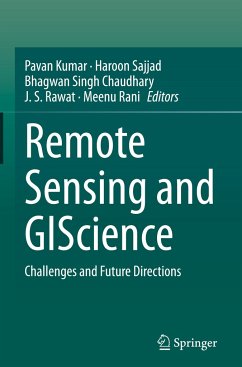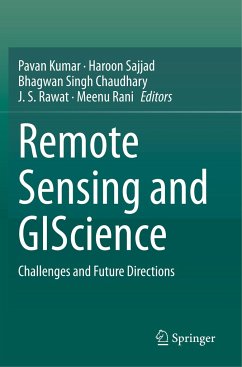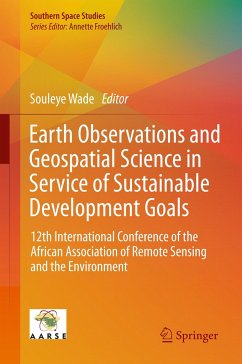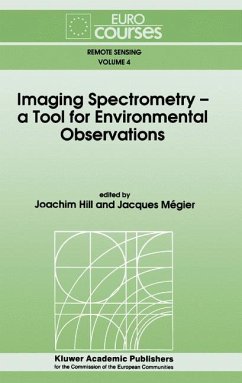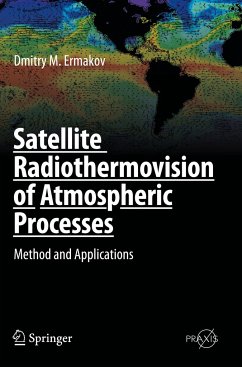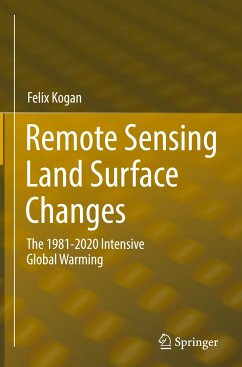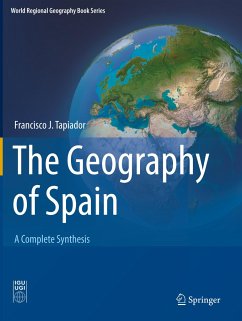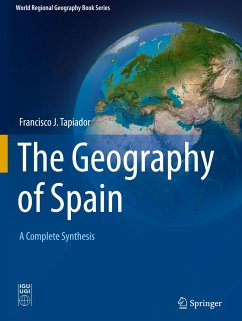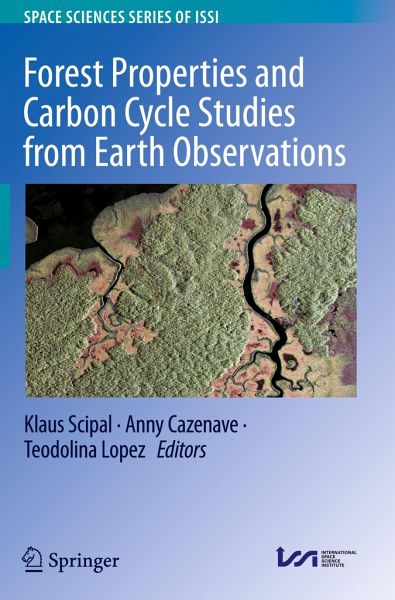
Forest Properties and Carbon Cycle Studies from Earth Observations
Versandkostenfrei!
Versandfertig in 6-10 Tagen
129,99 €
inkl. MwSt.

PAYBACK Punkte
65 °P sammeln!
This book features a comprehensive series of the overview articles on all relevant aspects of forest structure estimation from space and related fields. The overview articles in this book discuss the importance of the derived products for earth system science and policy, the latest earth observation system and techniques, aspects of ground data collection for contextualisation and validation and the consistent generation of estimates from multiple data stream.Previously published in Surveys in Geophysics, Volume 40, Issue 4, 2019The chapters "Aspects of Forest Biomass in the Earth System: Its ...
This book features a comprehensive series of the overview articles on all relevant aspects of forest structure estimation from space and related fields. The overview articles in this book discuss the importance of the derived products for earth system science and policy, the latest earth observation system and techniques, aspects of ground data collection for contextualisation and validation and the consistent generation of estimates from multiple data stream.
Previously published in Surveys in Geophysics, Volume 40, Issue 4, 2019
The chapters "Aspects of Forest Biomass in the Earth System: Its Role and Major Unknowns", "The Role and Need for Space-Based Forest Biomass-Related Measurements in Environmental Management and Policy', "Recent Advances in Forest Observation with Visual Interpretation of Very High-Resolution Imagery", "Species Matter: Wood Density Influences Tropical Forest Biomass at Multiple Scales", "Innovations in Ground and Airborne Technologies as Reference and for Training and Validation: Terrestrial Laser Scanning (TLS)", "New Opportunities for Forest Remote Sensing Through Ultra-High-Density Drone Lidar", "The Importance of Consistent Global Forest Aboveground Biomass Product Validation", and "A Joint ESA-NASA Multi-mission Algorithm and Analysis Platform (MAAP) for Biomass, NISAR, and GEDI" are available as open access articles under a CC BY 4.0 license at link.springer.com
Previously published in Surveys in Geophysics, Volume 40, Issue 4, 2019
The chapters "Aspects of Forest Biomass in the Earth System: Its Role and Major Unknowns", "The Role and Need for Space-Based Forest Biomass-Related Measurements in Environmental Management and Policy', "Recent Advances in Forest Observation with Visual Interpretation of Very High-Resolution Imagery", "Species Matter: Wood Density Influences Tropical Forest Biomass at Multiple Scales", "Innovations in Ground and Airborne Technologies as Reference and for Training and Validation: Terrestrial Laser Scanning (TLS)", "New Opportunities for Forest Remote Sensing Through Ultra-High-Density Drone Lidar", "The Importance of Consistent Global Forest Aboveground Biomass Product Validation", and "A Joint ESA-NASA Multi-mission Algorithm and Analysis Platform (MAAP) for Biomass, NISAR, and GEDI" are available as open access articles under a CC BY 4.0 license at link.springer.com




